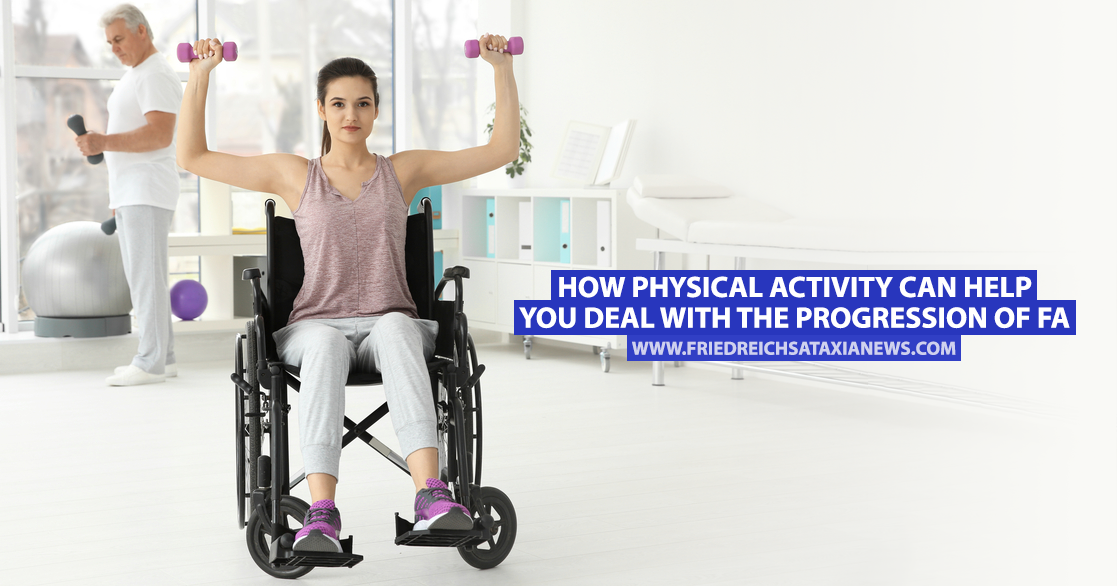How Physical Activity Can Help You Deal With the Progression of FA

After being diagnosed with a neuromuscular disorder with no set treatment plan and no cure, optimism and proactiveness may seem like a stretch.
You may feel like there’s nothing you can do to help your situation or change your fate. However, there are things you can physically do to possibly help slow your progression, get better at some of the daily tasks or help get your mind right.
Although physical activity can’t completely stop the progression of FA, it can help give you more time to build as much stamina and strength as you can to help deal with some of the most common symptoms. No matter your stage of progression, there’s a way to get some part of your body moving.
MORE: Setting New Year’s goals when you have Friedreich’s ataxia
Firing those neurons and attempting to work that connection from your brain to your muscles (even if you can’t move certain parts) is important. For example, working on your core strength is essential for anyone’s stability. Even if it’s just sitting in a chair and flexing your abdominals for a couple reps or until you’re completely spent or just thinking about moving a certain muscle, you can find a way to be active.
Join our FA forums: an online community especially for patients with Muscular Atrophy.
Depression and anxiety go hand in hand with FA so it’s important you find a healthy coping mechanism. The Center for Disease Control and Prevention claims that, “regular physical activity can help keep your thinking, learning, and judgment skills sharp as you age. It can also reduce your risk of depression and may help you sleep better. Research has shown that doing aerobic or a mix of aerobic and muscle-strengthening activities three to five times a week for 30 to 60 minutes can give you these mental health benefits. Some scientific evidence has also shown that even lower levels of physical activity can be beneficial.” The mental effects of Friedreich’s ataxia are almost as big as the physical effects so it’s important to have those endorphins flowing to help you manage them.
As FA patients, there are many factors that contribute to the quality of a workout. Whether or not you have children, a job, if you got a good night’s sleep, how sore or achy your body is, the number of things you have to do during the day and other everyday stresses can all affect the amount of energy you can put into your workout. Let those factors determine how you workout that day and remember to be easy on your body if needed. No matter what your workout preference is — stretching and standing at home, yoga, weight lifting, Pilates — just do it. Everyone has their own way they like to get moving so its up to you to find yours.
MORE: Why patience is so important when you have FA
Friedreich’s Ataxia News is strictly a news and information website about the disease. It does not provide medical advice, diagnosis or treatment. This content is not intended to be a substitute for professional medical advice, diagnosis, or treatment. Always seek the advice of your physician or another qualified health provider with any questions you may have regarding a medical condition. Never disregard professional medical advice or delay in seeking it because of something you have read on this website.





